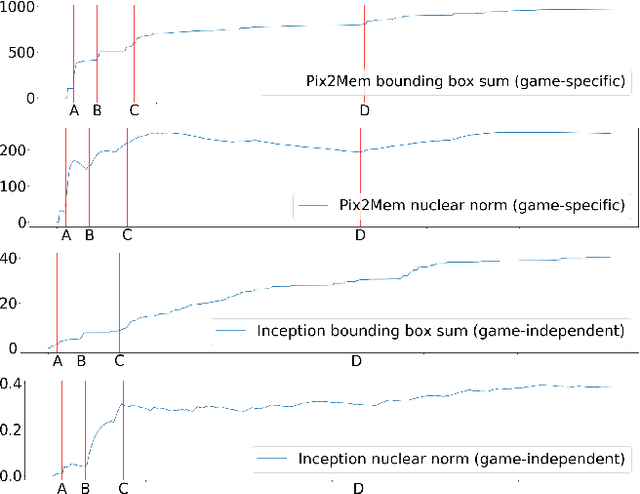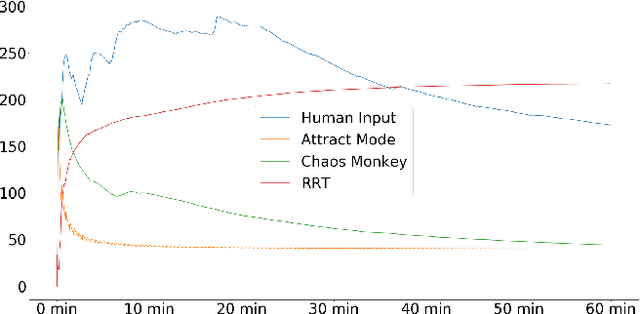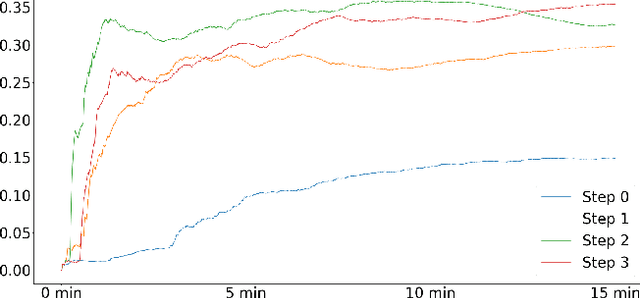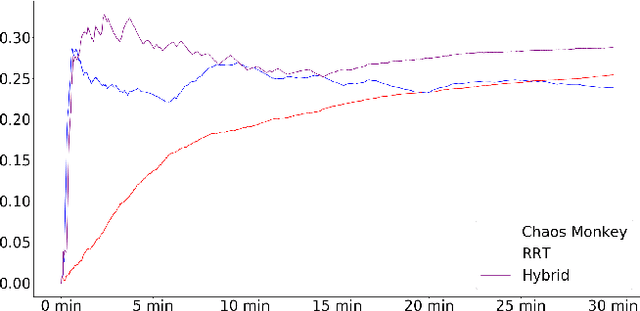Adam M. Smith
You-Only-Randomize-Once: Shaping Statistical Properties in Constraint-based PCG
Sep 01, 2024Abstract:In procedural content generation, modeling the generation task as a constraint satisfaction problem lets us define local and global constraints on the generated output. However, a generator's perceived quality often involves statistics rather than just hard constraints. For example, we may desire that generated outputs use design elements with a similar distribution to that of reference designs. However, such statistical properties cannot be expressed directly as a hard constraint on the generation of any one output. In contrast, methods which do not use a general-purpose constraint solver, such as Gumin's implementation of the WaveFunctionCollapse (WFC) algorithm, can control output statistics but have limited constraint propagation ability and cannot express non-local constraints. In this paper, we introduce You-Only-Randomize-Once (YORO) pre-rolling, a method for crafting a decision variable ordering for a constraint solver that encodes desired statistics in a constraint-based generator. Using a solver-based WFC as an example, we show that this technique effectively controls the statistics of tile-grid outputs generated by several off-the-shelf SAT solvers, while still enforcing global constraints on the outputs.1 Our approach is immediately applicable to WFC-like generation problems and it offers a conceptual starting point for controlling the design element statistics in other constraint-based generators.
* Published in Foundations of Digital Games (FDG) 2024. 10 pages, 6 figures
Taking the Scenic Route: Automatic Exploration for Videogames
Dec 07, 2018



Abstract:Machine playtesting tools and game moment search engines require exposure to the diversity of a game's state space if they are to report on or index the most interesting moments of possible play. Meanwhile, mobile app distribution services would like to quickly determine if a freshly-uploaded game is fit to be published. Having access to a semantic map of reachable states in the game would enable efficient inference in these applications. However, human gameplay data is expensive to acquire relative to the coverage of a game that it provides. We show that off-the-shelf automatic exploration strategies can explore with an effectiveness comparable to human gameplay on the same timescale. We contribute generic methods for quantifying exploration quality as a function of time and demonstrate our metric on several elementary techniques and human players on a collection of commercial games sampled from multiple game platforms (from Atari 2600 to Nintendo 64). Emphasizing the diversity of states reached and the semantic map extracted, this work makes productive contrast with the focus on finding a behavior policy or optimizing game score used in most automatic game playing research.
Addressing the Fundamental Tension of PCGML with Discriminative Learning
Sep 10, 2018


Abstract:Procedural content generation via machine learning (PCGML) is typically framed as the task of fitting a generative model to full-scale examples of a desired content distribution. This approach presents a fundamental tension: the more design effort expended to produce detailed training examples for shaping a generator, the lower the return on investment from applying PCGML in the first place. In response, we propose the use of discriminative models (which capture the validity of a design rather the distribution of the content) trained on positive and negative examples. Through a modest modification of WaveFunctionCollapse, a commercially-adopted PCG approach that we characterize as using elementary machine learning, we demonstrate a new mode of control for learning-based generators. We demonstrate how an artist might craft a focused set of additional positive and negative examples by critique of the generator's previous outputs. This interaction mode bridges PCGML with mixed-initiative design assistance tools by working with a machine to define a space of valid designs rather than just one new design.
 Add to Chrome
Add to Chrome Add to Firefox
Add to Firefox Add to Edge
Add to Edge